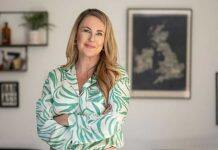Residents of remote Indigenous communities who prepay for access to electricity experienced unrelenting energy insecurity during the height of the COVID-19 pandemic, according to new research from The Australian National University (ANU).


Study co-author Dr Simon Quilty said while most Australians were protected from disconnection during the pandemic, these protections largely overlooked or were ineffective for more than 10,000 households in remote or regional communities that elect or are mandated to use the prepay system.
“This group continued to be disconnected from energy services at rates similar to that experienced before the pandemic, even as they were instructed by authorities to socially distance and isolate at home,” Dr Quilty said.
“Our paper shows disconnection for non-payment persisted even as case numbers increased during the hot summer months, when extreme heat amplifies disconnection rates.”
According to the researchers, the risks associated with regular disconnection for prepay customers have been long overlooked. The pandemic compounded the problem.
“This contributed to a lack of visibility of energy insecurity and available protections for this already vulnerable group during the pandemic,” lead author Brad Riley, from the ANU Centre for Aboriginal Economic Policy Research, said.
“Now that remedial measures have come to an end, there is a need to think carefully about why prepay customers were, and continue to be, treated differently in relation to available protections.
“Those most disadvantaged during COVID-19 were in many cases the same households who were experiencing energy insecurity prior to the pandemic.”
Dr Quilty added that COVID-19 “has magnified pre-existing health and socio-economic inequities”.
“There is a need to pay closer attention to the rationales of energy policy exceptionalism if we are to mitigate energy insecurity among specific groups, such as Indigenous Australian prepay customers, including during times of crisis,” he said.
“Equity concerns must be front and centre in the energy transition, especially as First Nations are among those who are most impacted by climate change.”
The research has been published in Energy Research and Social Science.







































